I need to fill space between 3 graphs but I don't understand how to limit the area on the graph y2
import numpy as np
import matplotlib.pyplot as plt
y = lambda z: (4 * z - z ** 2) ** (1 / 2)
y1 = lambda x: (8 * x - x ** 2) ** (1 / 2)
y2 = lambda c: c * 3 ** (1 / 2)
x = np.linspace(0, 12, 100)
z = np.linspace(0, 12, 100)
c = np.linspace(0, 12, 100)
plt.ylim(0, 4)
plt.xlim(0, 4)
plt.plot(z, y(z), color='blue', label="y=(18-x^2)^(1/2)")
plt.plot(c, y2(c))
plt.plot(x, y1(x), color='red', label='y=3*2^(1/2) - (18-x^2)^(1/2)')
plt.grid(True, zorder=5)
plt.fill_between(x, y(z), y1(x), alpha=0.5)
plt.show()
